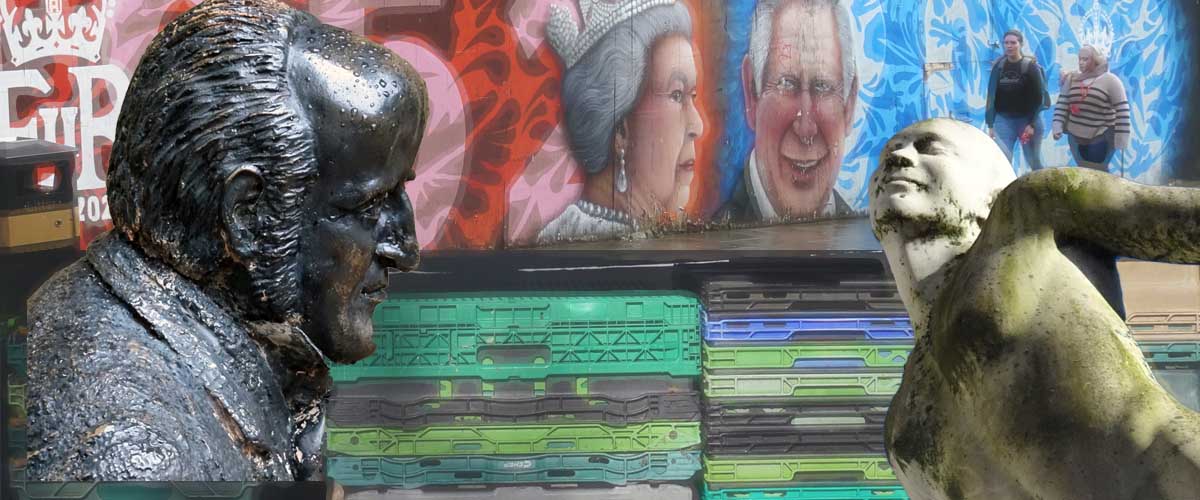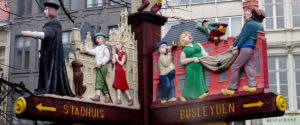I spent February in England, in Northampton. Not the most beautiful of places, and the weather was often overcast when it wasn’t wet. However I did get out with the camera a couple of times. Here’s a little photo essay for you.
Insane poet and a DNA high
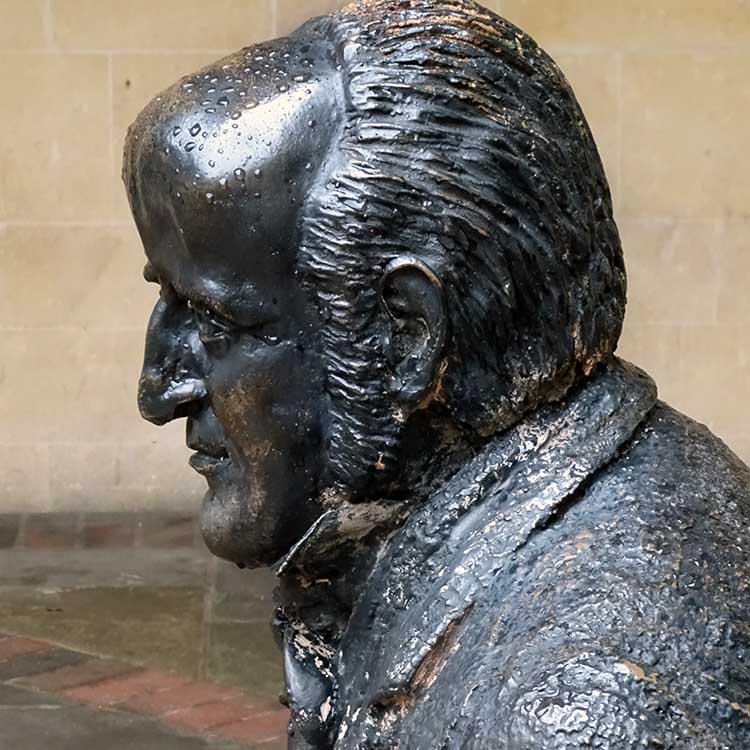
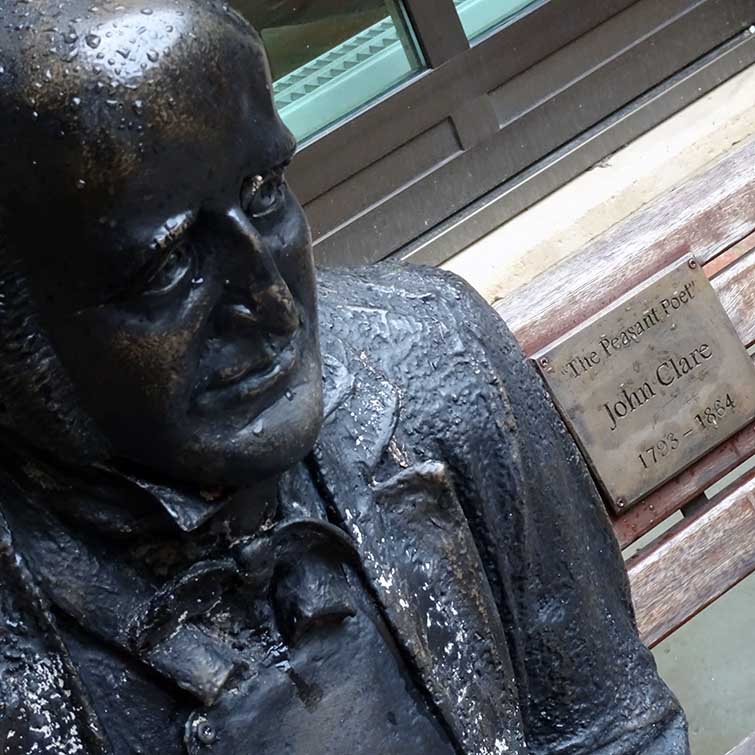

Let’s start with some locally and internationally famous people. John Clare, “the Peasant Poet”, was a contemporary of Keats, Shelly and Byron. Keats’ publisher took him up, his poetry was published, and he was briefly feted. In his day, poets could receive the same sort of adulation reserved for pop stars in the 20th century. Sadly, Clare was unable to make a living from his poetry and took to drink to drown his sense of failure. He lived his last few years in a lunatic asylum where his insanity was put down to his being a poet rather than addiction to alcohol. (John Clare on Wikipedia)
Northampton Council chooses to recognise Clare, and a half dozen other local luminaries, with life size statues in the courtyard of the Northampton Guildhall. The statues are made to look like bronze, but they turn out to be painted fiberglass. A shortsighted economy. The flecks of white you can see on John Clare’s jacket and hair are where the paint is flaking off.
Another local-made-good is Francis Crick, one of the scientists whose research led to deciphering the helical structure of DNA. His fiberglass figure in the Guild Hall courtyard is holding a model of the DNA helix. In the pedestrianised high street, a giant sculpture of two smiling figures also represent the helix. (More on Francis Crick here.)
A Princess and a Great British Winner

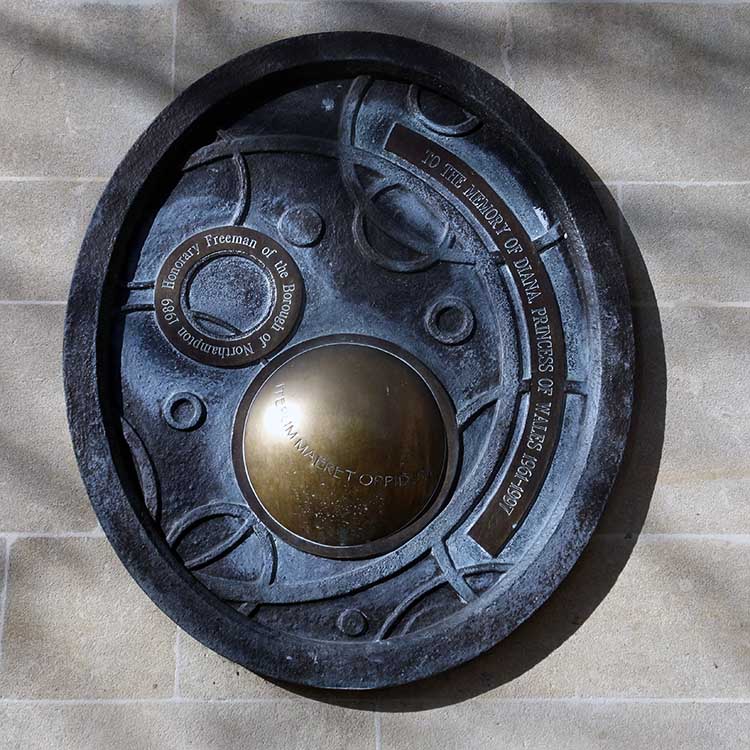

Just outside the Guildhall, there’s a pillar with a memorial to Diana, Princess of Wales. This is King Charles III’s first wife and the mother of Princes Harry and William. Diana was a member of the Spencer family of Althorp House, near Northampton.
Around the corner from the Diana memorial plaque is another plaque commemorating Northampton as winning “Great British High Street of the Year 2015”. It’s a little difficult to work out which street won the award, because none of the shopping streets in the city centre seem particularly impressive.
City streets

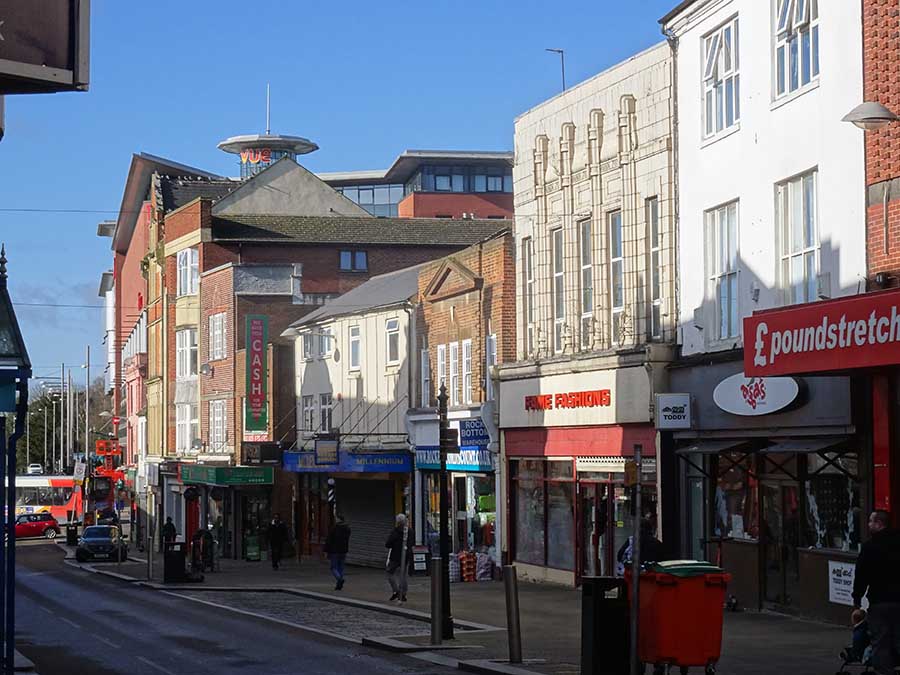

Some parts of Northmpton are not bad, but an awful lot looks like this. Derelict plots surrounded by delapidated fencing. Cheap shops selling cheap goods. An inordinate number of shops offering to buy as well as sell (and fence?) mobile phones and other electronic gear. It’s very obvious Northampton has fallen on hard times.
British municipalities cannot declare bankruptcy, but they can issue a “section 114 notice” – which says, basically, they would go bankrupt if they could. Northamptonshire, the County Council, has done this twice, both time in 2018. Northampton itself has not issued a 114 notice, but you look around, some days, and wonder why not?
The market that died
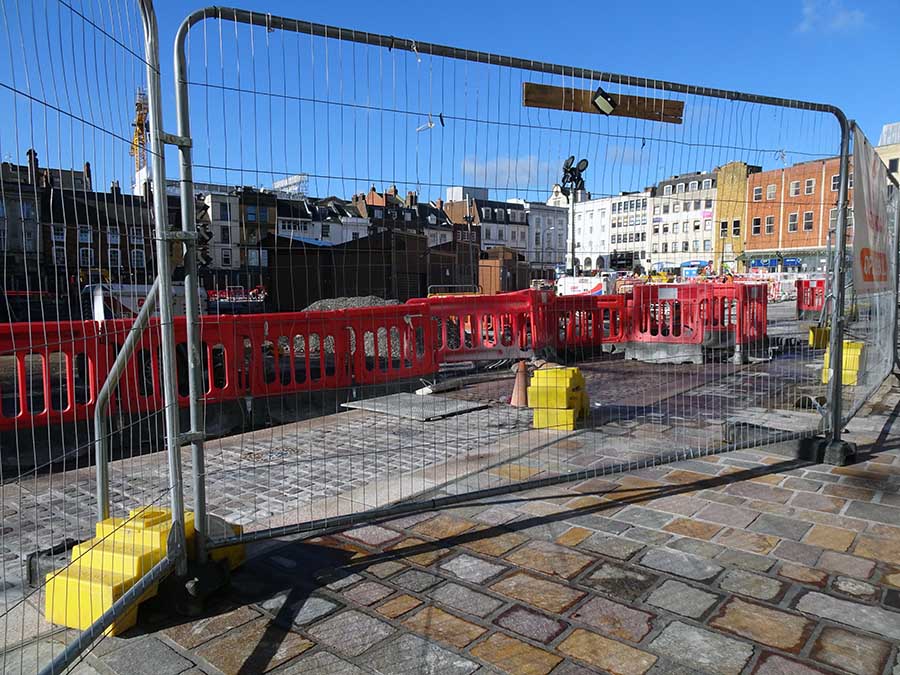
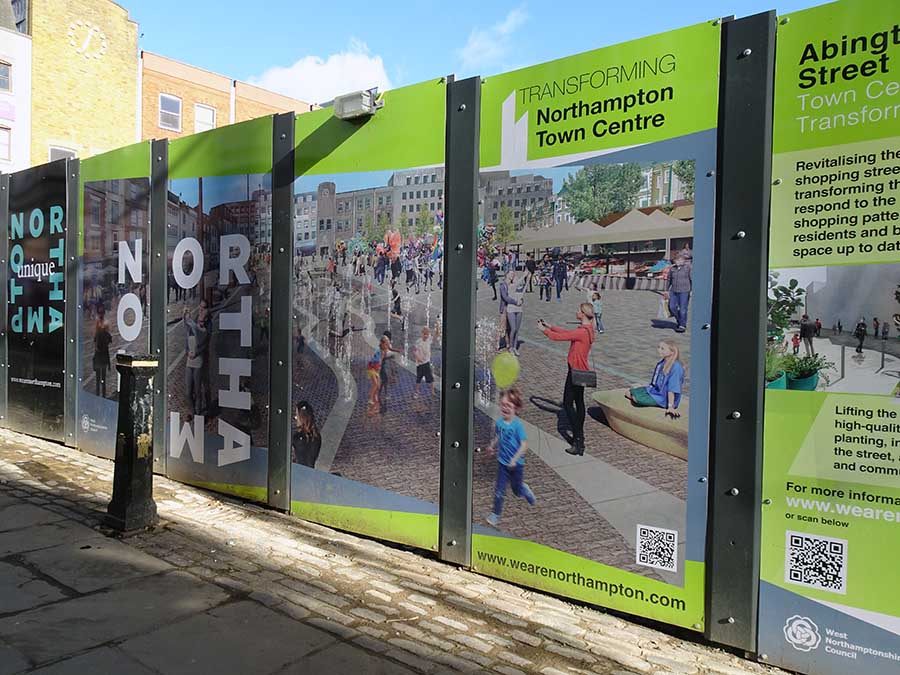
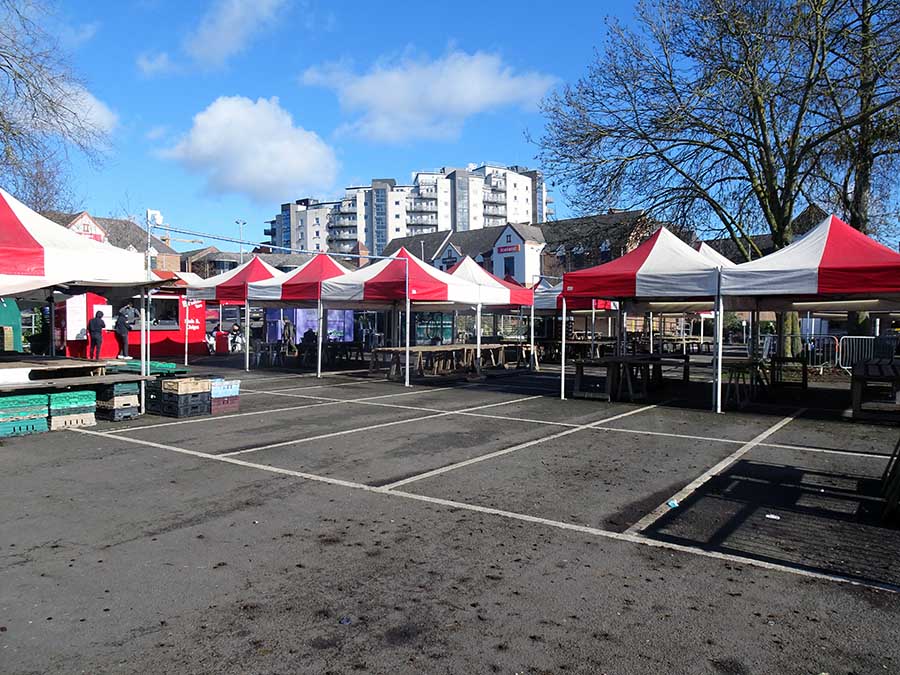


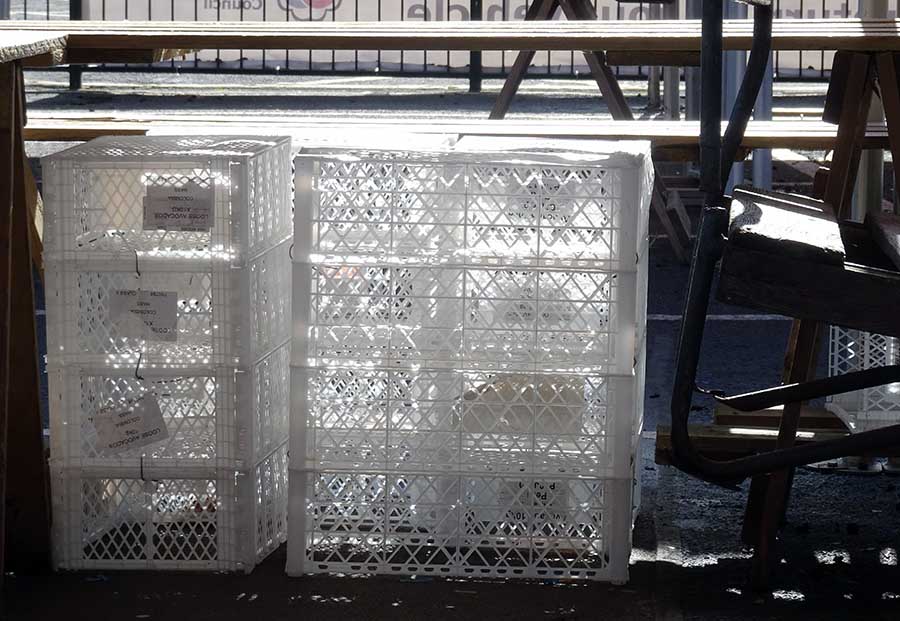
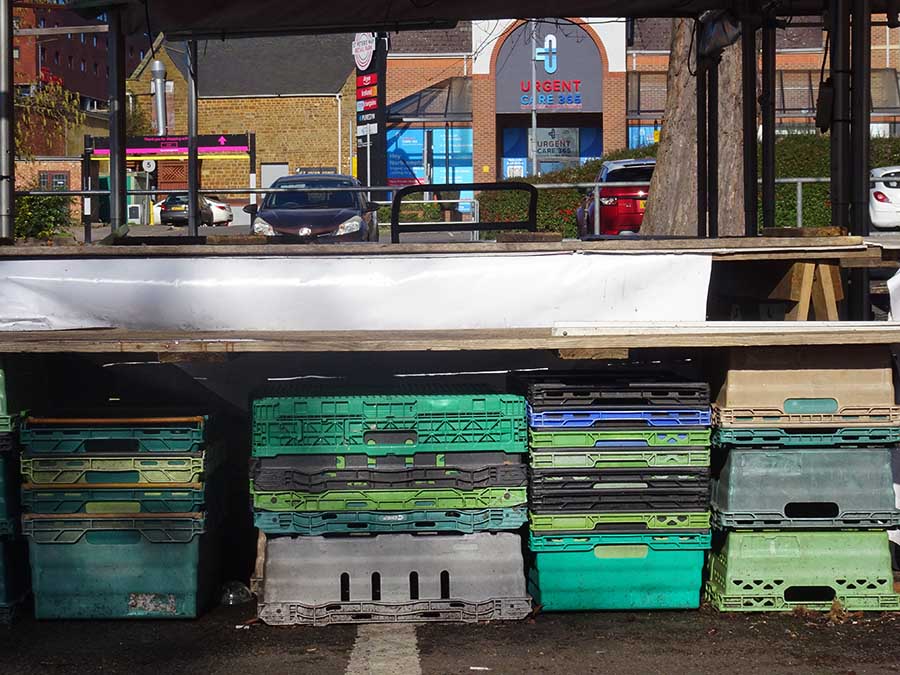
Northampton used to boast a market place in the centre of town that had been going since the Middle Ages. No longer. The market has been moved away to die in a car park while the market square is torn up for improvement. It’s a bit of a fright to see it. Both the way the square looks now and the “vision” for the refurbished square on the hoardings around. I honestly walked past these images for several days wondering why someone had scratched all over them. It was only when I took the picture (The vision) I realised what I’d taken for scratches were supposed to be jets of water.
It’s possible I had very bad timing, but whenever I visited the market in its new location, it looked like this. Rain or shine. Presumably some sort of trading is going on, but it wasn’t obvious.
UoN – University of Northampton
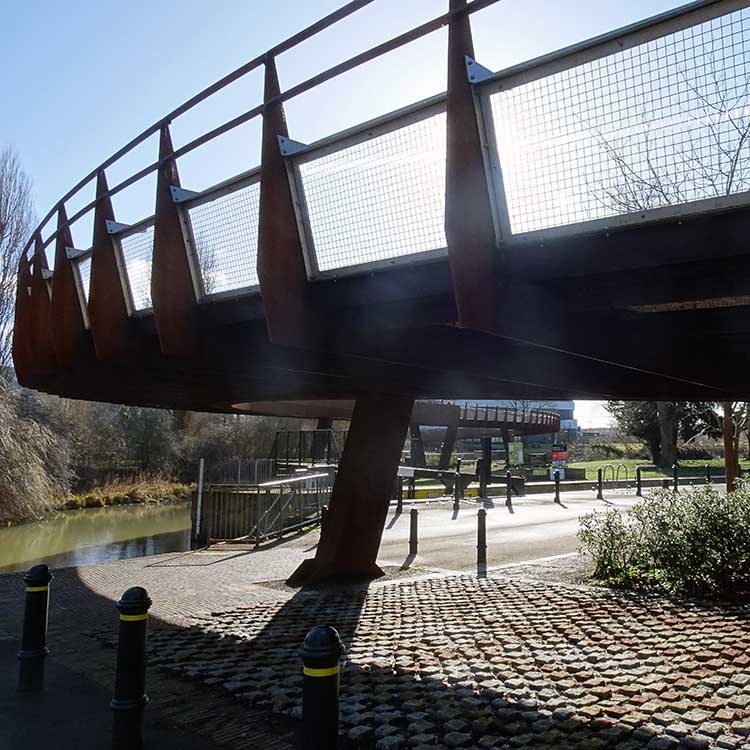
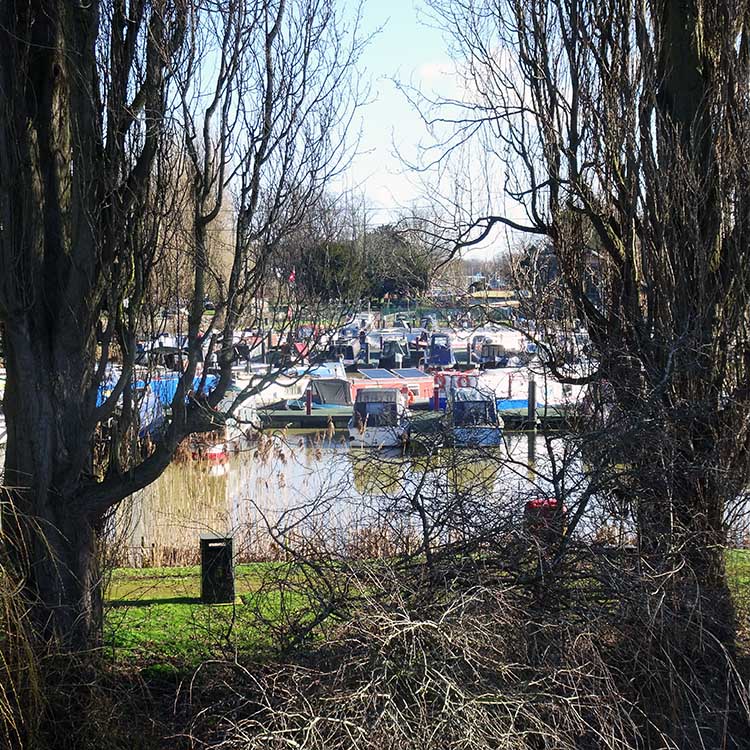
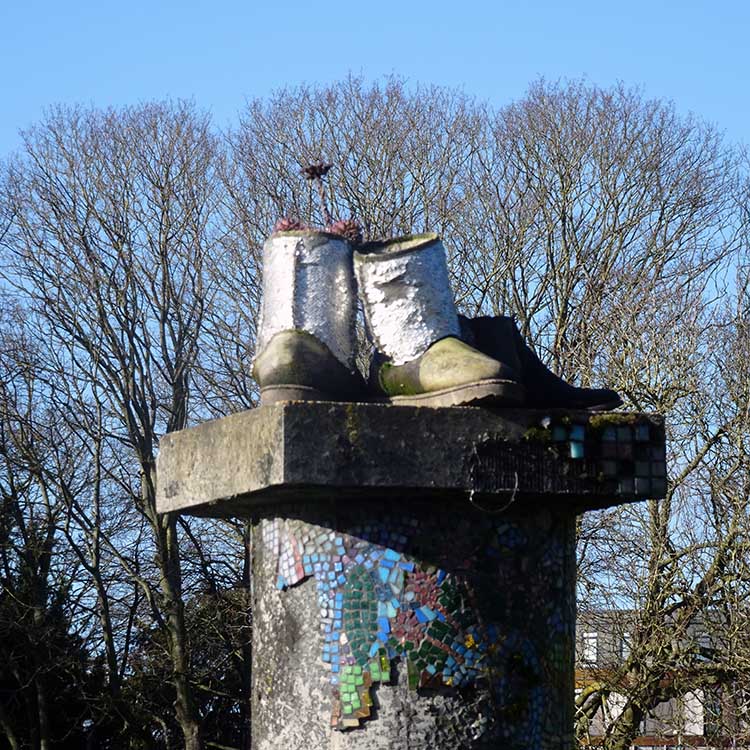
The University of Northampton (abbreviated UoN) lies on the far side of the River Nene from the town itself. (I kept wanting to interpret the abbreviation as University over Nene.) Access is over the Nene by this snaking bridge from which you can get a glimpse of the marina or canal basin with its moored boats and barges.
Northampton was once renowned as the place to go for good footwear. That was long ago, but the boots on this pedestal seem to be commemorating the cobblers’ heyday.
Royalists?


Back in the days of the Civil War (that is the English Civil War for any American visitors, 1642 to 1651), Northampton was on the side of Parliament against the King. After King Charles II regained the throne in 1662, he had the castle demolished in revenge. This hoarding appears to commemorate the reign of Queen Elizabeth II and the coronation of King Charles II, But I can’t help wondering if the spirit of anti-Royalism is not, perhaps, still alive and well in Northampton.
Why was I there?
My mother, who will turn 102 in March, lives in Northampton. Her house needed some urgent building work. (New back windows among other things.) She couldn’t stay in the house while the work was going on, and couldn’t stay with my sister as she can’t cope with stairs without a stair lift. So we rented a flat for her and I moved in for the duration. Mostly to be on hand in case she fell. The weather was mild – wet but mild – which favoured the builders. They completed their work on time and under budget and we were able to move Mum back home before the end of the month.
She didn’t want me to take photos of her this year, so here below is a collage made for her 100th birthday in 2022.
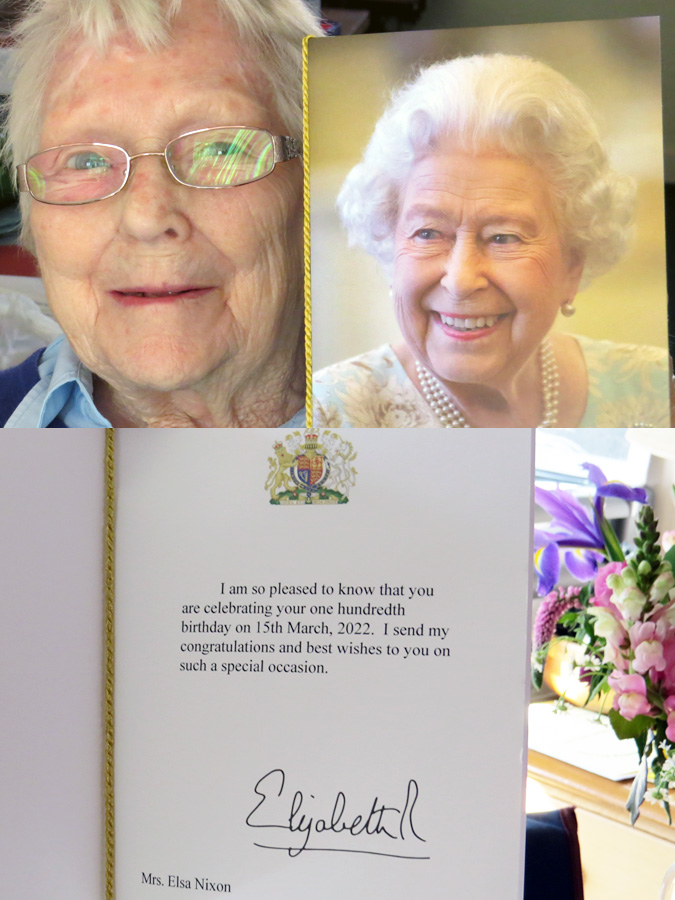
Appearances to the contrary, Mum is not a Royalist either. (Though she did like Princess Diana.)

